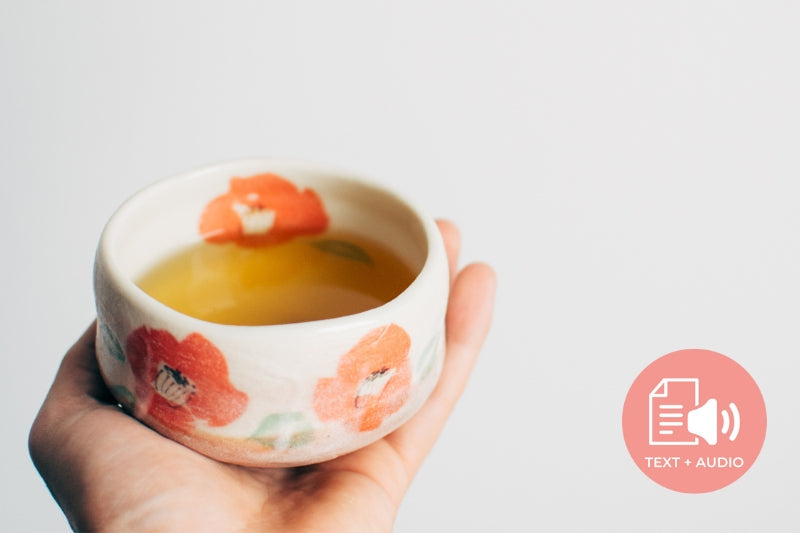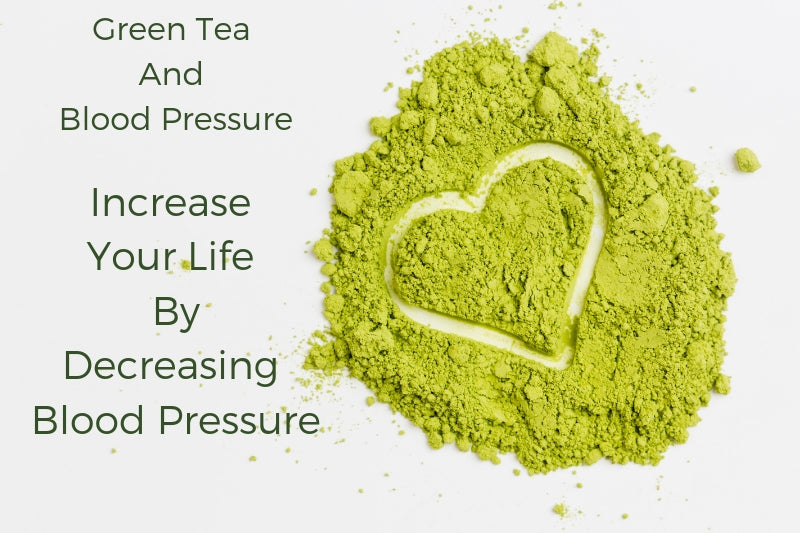Leaves have been a staple for both internal and topical medicine. In early centuries, leaves are the best tool to treat wounds, and even ingested for other internal sickness. Among leaves that are beneficial for health, green tea has been one of the favorites.
Green tea has been a favorite among the Japanese for centuries. It is said that in 805 Buddhist monks Kukai and Saicho returned to Japan with young tea trees after studying in China. In 1181, another Buddhist monk named Eisai had been studying in China. Eisai introduced and popularized the sipping of tea for optimum health. About the same time, farmers started growing green tea in Uji, Kyoto. The last health reference Japanese book of Eisai’s about tea was in 1211; Kissa Yojoki (the Book of Tea).
With the introduction of green tea to Japan, along came much of the knowledge of it many health benefits. And through the extended use, advanced cultivation and learning of its many discovered medicinal values, Japanese green tea has remained a greatly valued beverage and food. Considered as one of the cure-all beverages, many products that market health benefits would never go wrong with incorporating green tea in their items.

Great Health Benefits
Rendering to WebMD, green tea is a widely studied tea that has high concentrations of epigallocatechin gallate (EGCG). Considering that green tea is mostly unprocessed from unoxidized leaves, the higher amount of antioxidants in green tea compared to other tea leaves help combat cancer growth in the stomach, lungs, pancreas, breast and bladder. As well, the high antioxidant contents found in green tea may prevent the arteries from clogging. What is more, many studies find that this amazing tea may be able to burn fat, lower the risk of neurological disorders like Parkinson’s and Alzheimer’s, offset oxidative stress on the brain, improve cholesterol levels and lower the risk of stroke.
A Rich Antioxidant
Green tea is renowned for being rich in antioxidants, particularly epigallocatechin gallate (EGCG). In fact, many claim that this special antioxidant is what makes green tea have such powerful medicinal properties. Moreover, a recent post from Livestrong states that the epigallocatechin gallate in green tea may help lower total body weight and body fat levels. In fact, the fat burning antioxidant helps increases your body’s metabolism, especially visceral fat or fat that is in the abdomen. (Read more about green tea and diet effect in my other article)
According to Livestrong, epigallocatechin gallate may also be beneficial for people at risk of developing type 2 diabetes, who are overweight and have high blood pressure. This is because this special antioxidant may increase fat burning abilities or boost the transport of stored fat to cells for oxidation. (Read more about green tea and diabetes in my other article)
However, research suggests that epigallocatechin gallate may not promote fat loss but with a larger dose taken with caffeine, it may create increased fat loss. Also, some studies show that patients with glucose problems had a decrease in circulating glucose levels which often goes with weight issues. (Read more about this topic on my another article - Japanese Green Tea and Diet)
ECGG also, being an antioxidant ingredient, prevents and fights hair loss. Due to green tea’s anti-inflammatory nature, it also helps to reduce dandruff by simply putting green tea leaves or extract on the scalp and massage it.
L-theanine
Another beneficial substance found in green tea is L-theanine or theanine. This amazing amino acid is found naturally in green tea. It is said to support many health issues such as anxiety, insomnia, stress, depression, high cholesterol and high blood pressure.
In addition, theanine is claimed to support weight loss, increase concentration and improve the immune system. As well, some specialists believe that theanine may prevent Alzheimer's, stroke and some types of cancer. (Read more about this topic on my another article - Cancer and Japanese Green Tea - Why It is Good for Treatment and Prevention)

Specifically, in a 2018 study made regarding the effects of green tea’s ECGG on cancer, it was found out that those who continuously consume green tea for 10 years could delay the growth of cancer by 7.3 years compared to those who have not consumed green tea.
What is more, theanine also shows promise as an aide for weight loss especially when combined with certain caffeine’s. In fact, theanine is often used as a supplement to shed pounds.
Polyphenols
Polyphenols that are found in tea include tannins, theaflavins, catechins and flavonoids. And in green tea there are epigallocatechin, epicatechin gallates, epigallocatechin gallates and epicatechins. As well, green tea contains flavanols like myricetin, kaempferol and quercetin.
The polyphenols in green tea are said to have many health benefits like detoxing many vital organs and also preventing cancer. In fact, according to the National Cancer Institute, tea polyphenols have been shown to impede tumor cell proliferation and prompt apoptosis in laboratory and animal studies. As well, tea catechins have shown to obstruct tumor cell invasiveness and angiogenesis. (Read more about polyphenols in my other article)
Polyphenols are also known to be a great anti-redness and anti-inflammatory content in green tea leaves. That is why green tea is also a popular content for facemasks to reduce redness and wellness, even rosacea and psoriasis. Green tea leaves are even used topically for sunburns and wounds to reduce redness and wellness.
This same green tea content could also controls sebum secretion in the skin, which causes acne for majority of those who have oily skin. Polyphenols also fight against bacterial membranes that cause acne as well.
Caffeines
Compared to other teas, green tea has about the lowest amount of caffeines (excluding non-caffeinated herbals teas). The highest is black teas and then white. However, caffeine content is also dependent on many variables like the brewing, type of buds and leaves and how the plant was grown. For example, how your tea is grown and packaged with affect the caffeines content. Teas grown is full sun have less amounts of caffeines than tea that is grown in the shade. Also, teas that are ground into powder, sliced or chopped will have a stronger dose of caffeines than the regular leaves. Additionally, the buds and leaves that are oftentimes used to make white tea have more caffeines than mature and older leaves.
Fluorides
As of late, a concern with some consumers is the fluoride in both green and black tea. Further, green tea has two times more fluorides than black tea. On the other hand, many experts agree that the fluoride found in tea is at such minuscule levels that it would be difficult to consume enough tea to be toxic. In addition, about 50 percent of any type of fluorides is excreted and the other portion is deposited in the teeth and bones. (Read more about this topic on my another article - Science Behind Why Japanese Green Tea is Good for Health)

In fact, Dr. Weil M.D. feels that the worries in regards to fluorides in tea are overstated. Although large amounts of the material can cause brittle bones after several years, but this is very rare. As well, fluorides are toxic in very high amounts which may cause gastrointestinal symptoms and sometimes death. For example, a large amount would be about 20,000 times more fluorides than what is found in an 8 ounce glass of water.
Skin Benefits
It is known worldwide that green tea has so much benefits by simply drinking it, from brain function to weight loss. However, even after consuming a cup of green tea, its benefits do not end in drinking it since the left over tea leaves are often used to be face mask to get rid of acne. The ECGG and ECG contained in green tea even fights another type of cancer, which is skin cancer. This is due to the antioxidant properties contained in green tea leaves, which get rid of free radicals that harm the body, including the skin.

ECG also fight ultraviolet rays from the sun that is a major factor in having skin cancer, as it enhances and repairs damaged DNA. The same green tea content also fights skin aging. ECG rejuvenates skin cells that prevent skin aging and dulling. Green tea also contains vitamin B2, which is also vital to have a healthier skin as it produces collagen in the body. Vitamin E is also found in green tea leaves that also fights skin aging and giving every person a healthier and more hydrated skin. Topically used, it produces more moisturizer in the skin and prevents skin roughness.
Conclusion
It is no doubt that historically Green Tea has been providing variety of health benefit and is believed to be one of the main reasons why Japanese people live longer and healthier compared to other part of the world. More recent study and researches reveals and confirms the benefit from different angles of science. We can enjoy all the benefit by simply having a good quality cup of Green Tea today and every day.
This article was first published in 2016 and it was updated in 2022 just for you.
Get Free Bonus Books

Sign up for free to the Green Tea Club to get advice and exclusive articles about how to choose Japanese Tea, and tips, tricks, and recipes for enjoying Japanese tea.
About the author
Kei Nishida
Author, CEO Dream of Japan
Certification: PMP, BS in Computer Science
Education: Western Washington University
Kei Nishida is a passionate Japanese green tea connoisseur, writer, and the founder and CEO of Japanese Green Tea Co., a Dream of Japan Company.
Driven by a deep desire to share the rich flavors of his homeland, he established the only company that sources premium tea grown in nutrient-rich sugarcane soil—earning multiple Global Tea Champion awards.
Expanding his mission of introducing Japan’s finest to the world, Kei pioneered the launch of the first-ever Sumiyaki charcoal-roasted coffee through Japanese Coffee Co. He also brought the artistry of traditional Japanese craftsmanship to the global market by making katana-style handmade knives—crafted by a renowned katana maker—available outside Japan for the first time through Japanese Knife Co.
Kei’s journey continues as he uncovers and shares Japan’s hidden treasures with the world.
Learn more about Kei










Very informative article. Thanks!